This page presents a few statistical results already obtained. To understand them correctly, please read the section about Methodological issues in the Guidelines.
-

Statistics

Statistics
This page presents a few statistical results already obtained. To understand them correctly, please read the section about Methodological issues in the Guidelines.
The following diagrams have been established using the BiblIndex corpus in 2014.
Old Testament
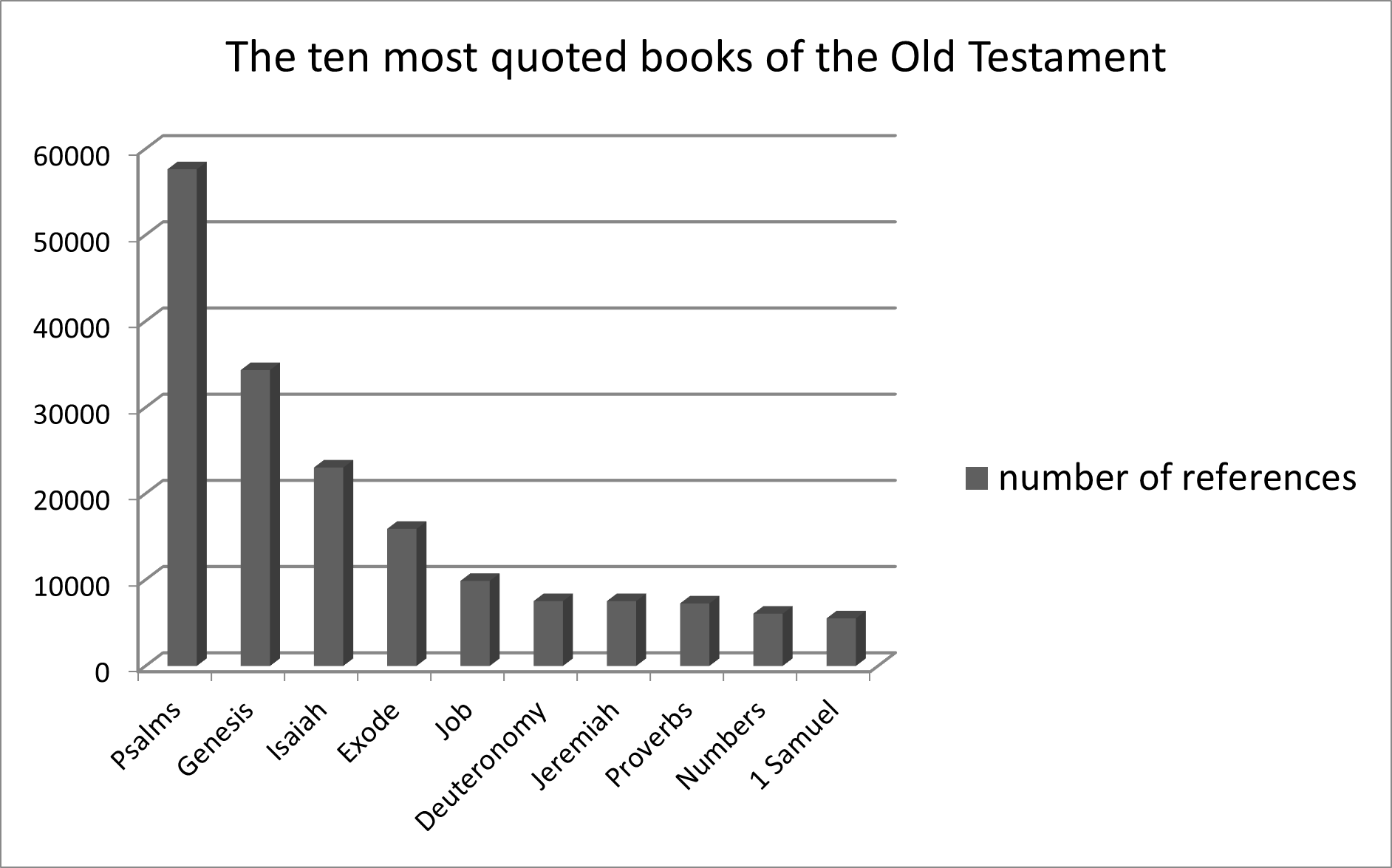
New Testament
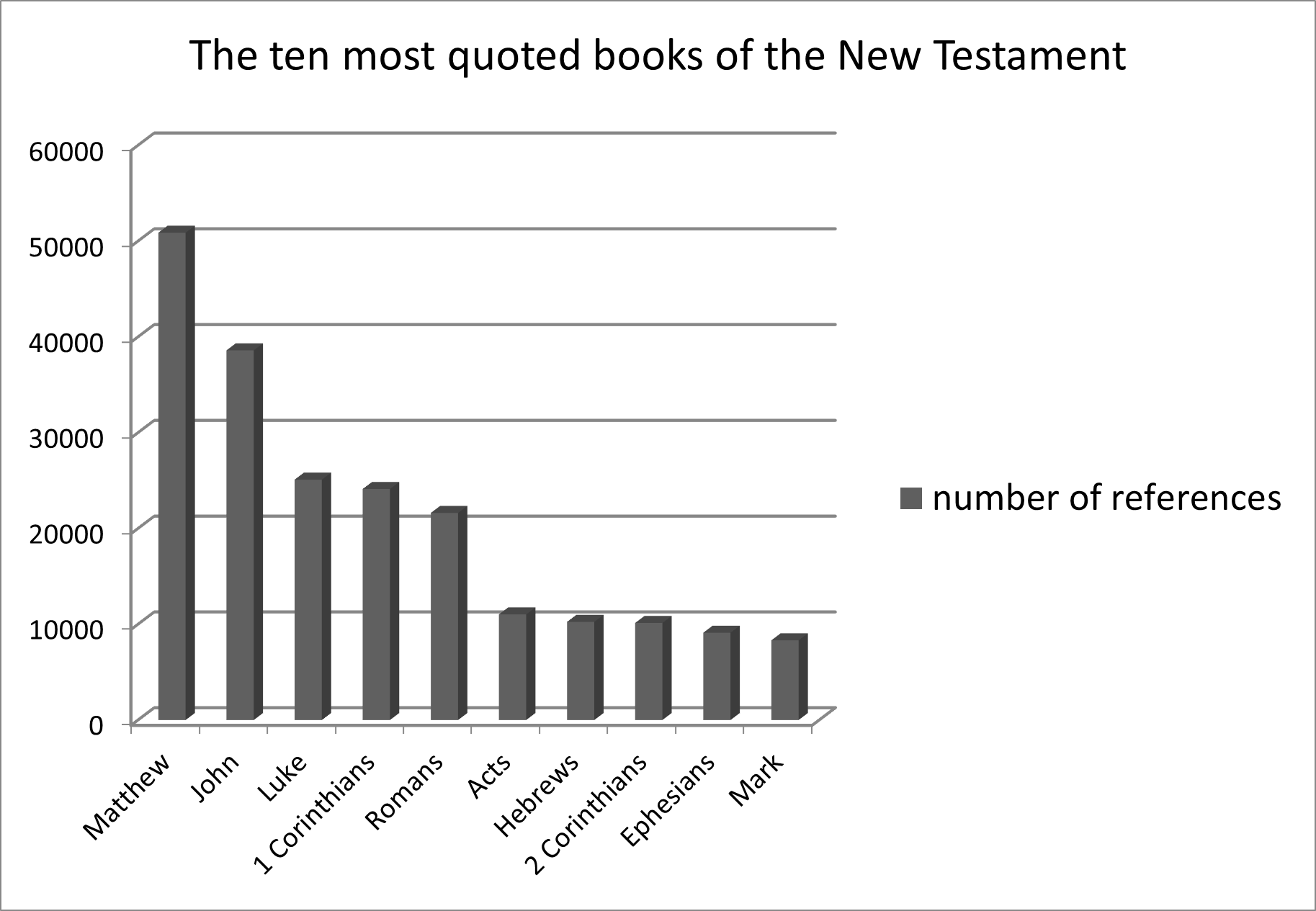
Distribution of Old Testament quotations
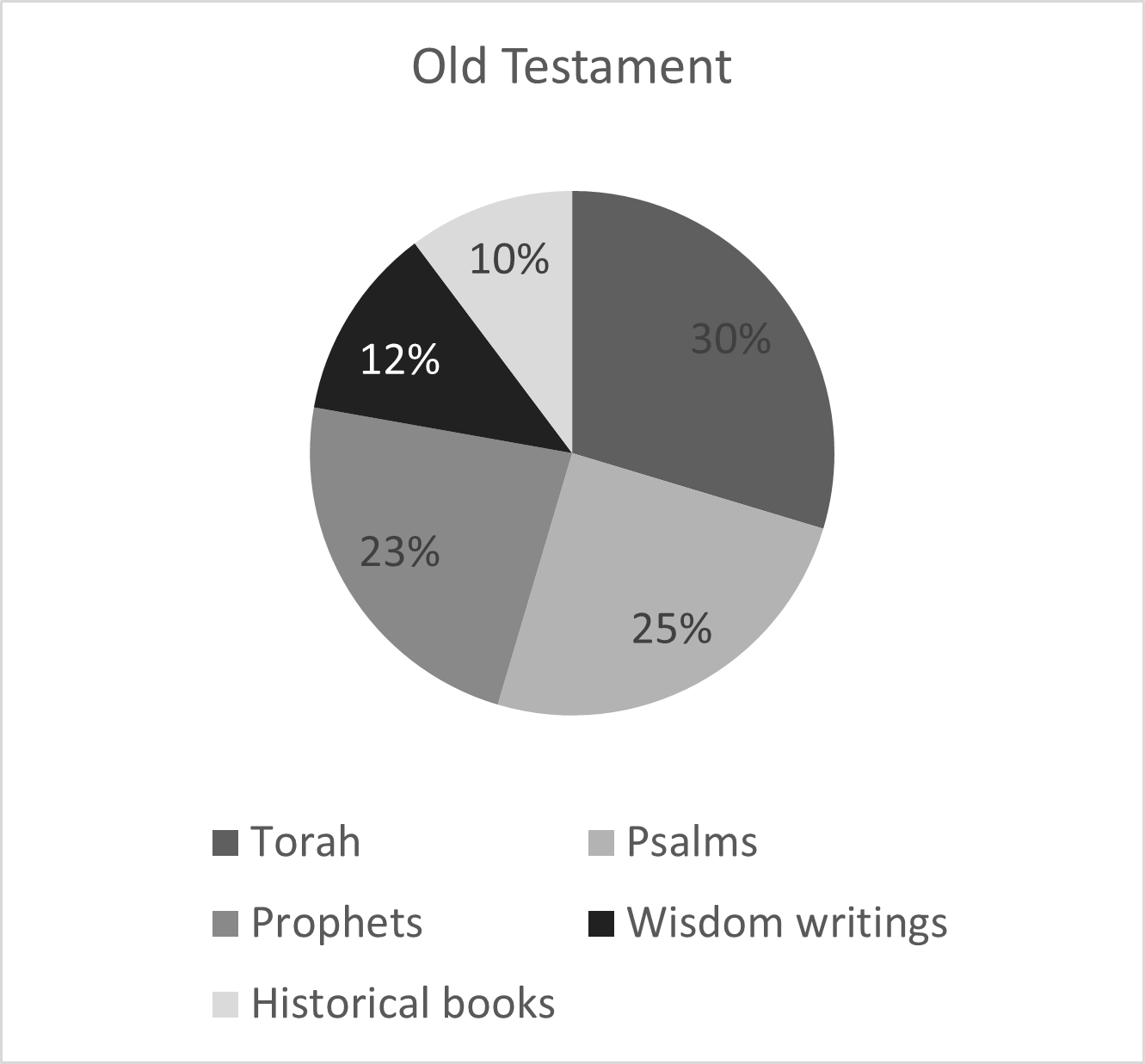
The most quoted verses
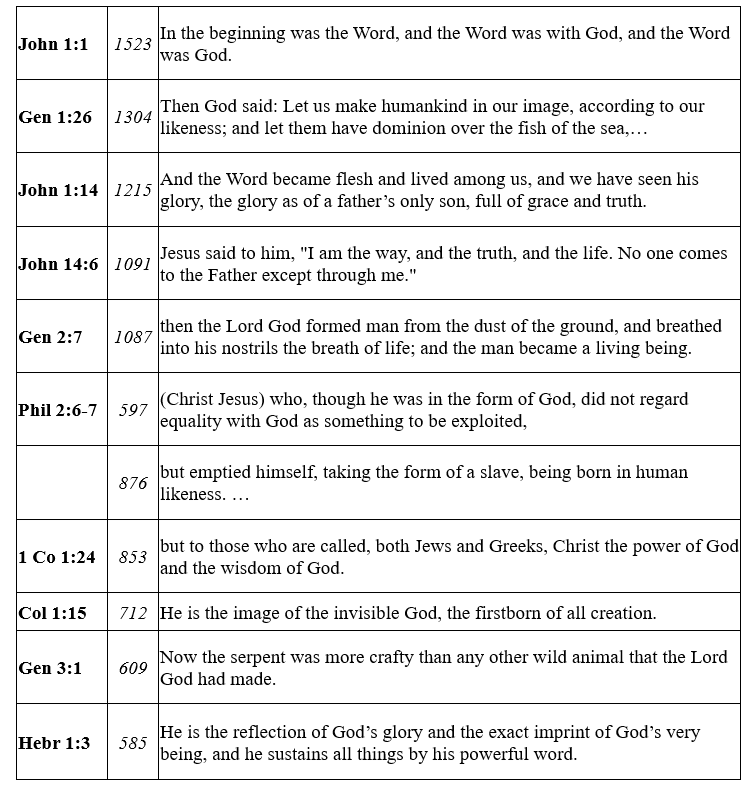
Distribution of references to Wisdom writings (1st-5th centuries)
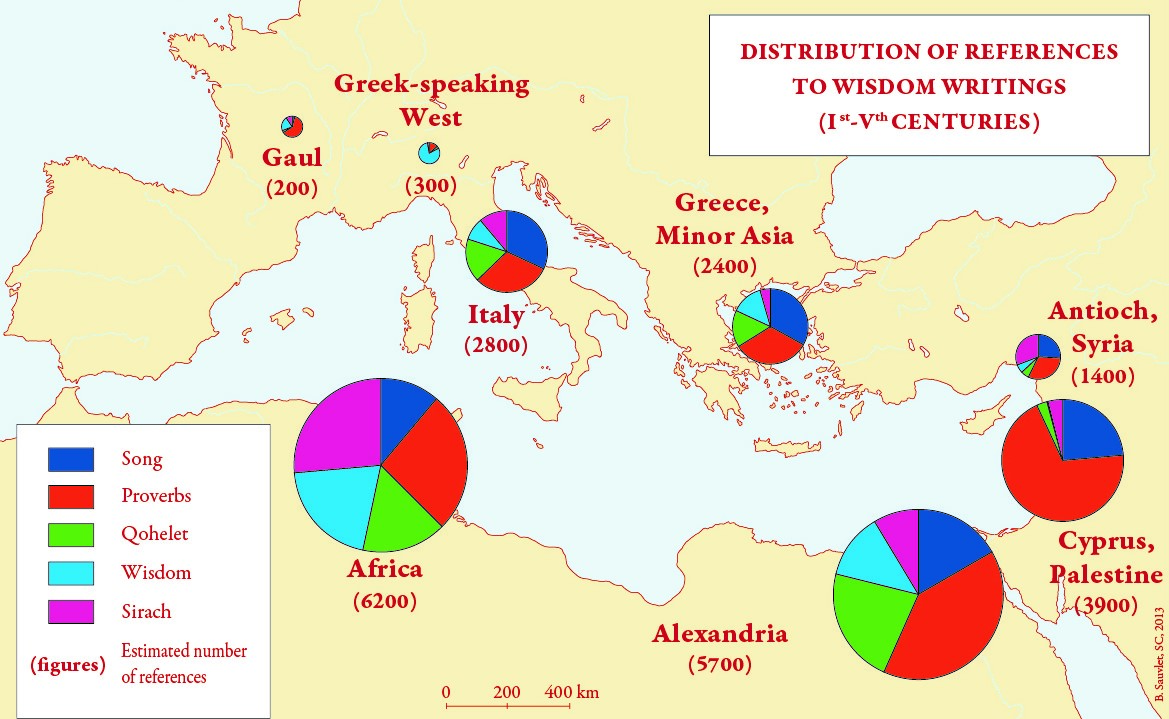
John 1:1-18
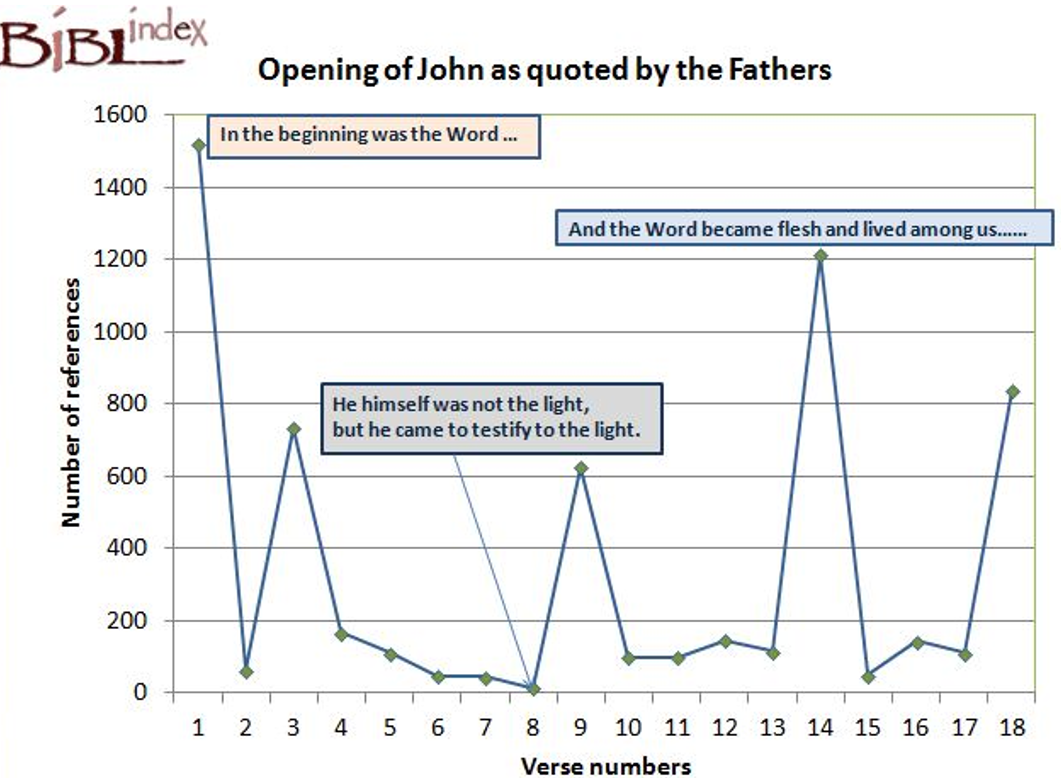
Verse cooccurences around Ep 1:10 in the works of Irenaeus of Lyon
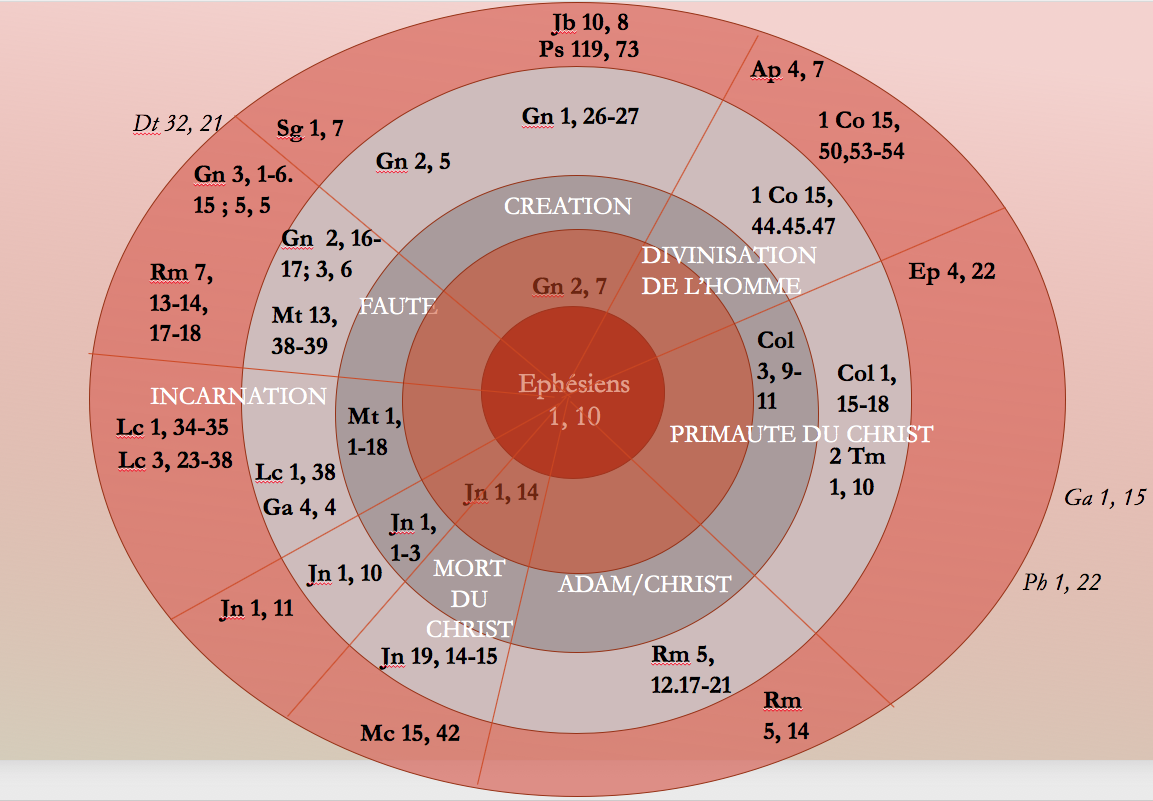
This diagram lists all the verses that are quoted in the context of each occurrence of Ep 1, 10 1, and classifies them into concentric circles according to a coefficient of proximity: in the 1st circle are those verses appearing 12 or 13 times together with Ep 1, 10, in the 2nd those found 7 or more times, up to the last one which brings together the verses present twice. The diagram can be read in an anti-clockwise direction, starting from the top.
The two key verses, Ge 2:7 and Jn 1:14, answer each other. They are systematically associated with the idea of recapitulation, in preference to all the others. Some complementary verses support them: Ps 119:73, for example, echoes Ge 2:7 ("Your hands have made me and fixed me"), as does Job 10:8 ("Your hands have made me, formed me"). The key passages of the creation narratives are not far off either: man in the image and likeness (Ge 1:26-27), the creation of the world that pre-exists him (Ge 2:5), the spirit of God that fills the universe (Wis 1:7); there is also the evocation of the original sin (Ge 2:16-17; 3:1-6), with its consequence, Adam’s physical death (Ge 5:5). All verses of the Old Testament that have been used relates to creation. Then we find the theme of evil, which already appeared in the complements of the verb "to recapitulate": a whole series of texts illustrates the symmetry between Adam's sin, which brings death into the world, and Christ's obedience, which destroys death (Rm 5). Rom 7 speaks of the flesh inhabited by sin; the parable of the good grain and the tares (Mt 13:38-39) speaks of the struggle against the hold of the devil.
Apart from Jn 1:14, the rest of John's Prologue is very present, especially verse 3, to express the pivotal role of the Incarnation. The Incarnation is also mentioned through the genealogy of Christ (Mt 1:1-17; Lk 3:23-38) and the virginal conception (Mt 1:18 and Lk 1:34-35), with the acceptance of Mary (Lk 1:38). The reality of Christ's death is also expressed: Jn 19:14-15; Joseph of Arimathea who comes to claim the body of Jesus (Mk 15:42).
On the right side of the diagram, Pauline theology unfolds, distancing itself from the event narrative. There are verses with themes close to the recapitulation in Christ, such as Col 3:11, where Christ "is all in all", in a passage that evokes the stripping of the old man to put on the new in the image of the Creator, just as Eph 4:22; 1 Co 15 speaks of the passage from the psychic to the spiritual. Finally, the Primacy of Christ, with the hymn of Col 1:15-18, the power of Christ's grace which destroyed death (2 Tim 1:10) are recalled.
Thus, from the distribution of quotations, a representation of the theology underlying the texts can already be constructed.
(Excerpt from L. Mellerin, « Étude des usages bibliques d'Irénée de Lyon à l'aide de BiblIndex », in A. Bastit-Kalinowska, J. Verheyden (dir.), Irénée de Lyon et le début de la Bible chrétienne, Actes de la journée du 1. VII.2014 à Lyon, Instrumenta Patristica et Mediaevalia 77, Turnhout 2017, p. 35-62).